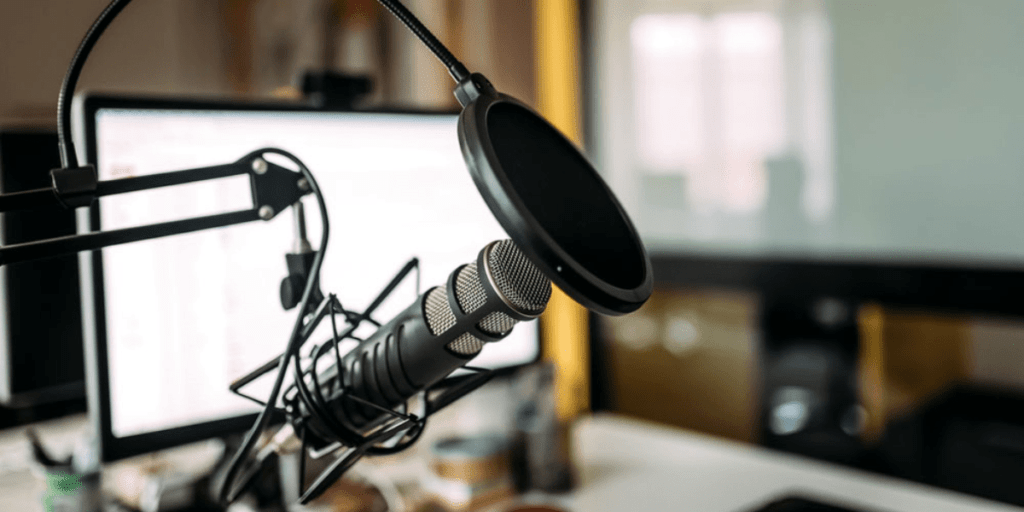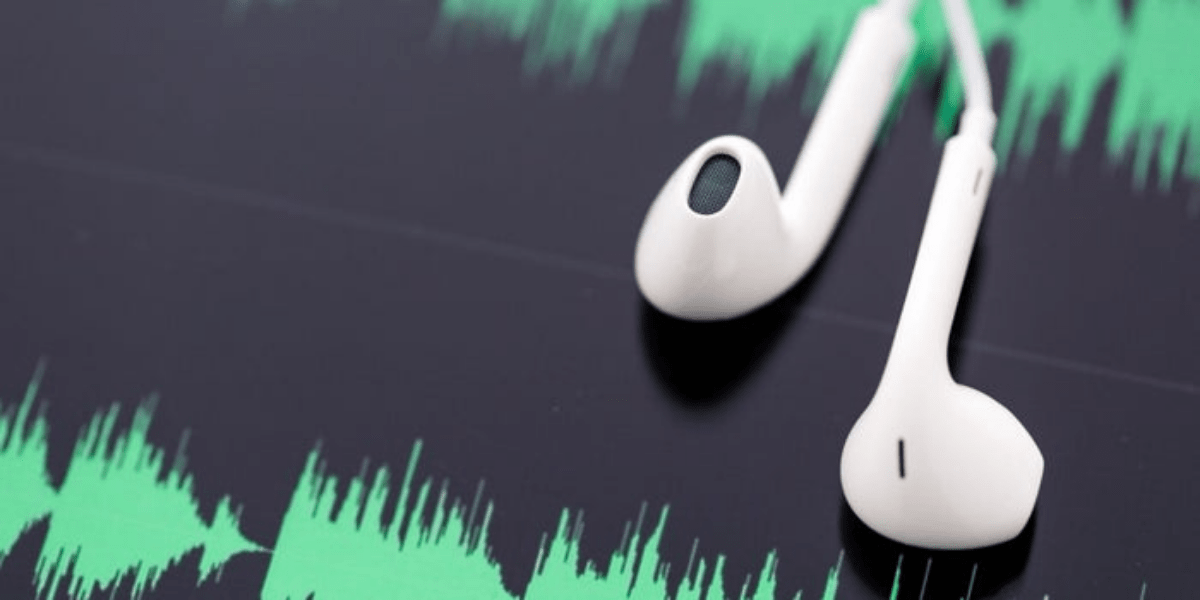Whether you are looking to expand your existing business/brand or launch a podcast as a first-time content creator, there are many benefits to starting one.
For some people, a podcast is a chance to dig deeper into subjects that interest them and can become a fulfilling hobby.
It’s similar to having your own radio station or an audio version of a blog. Just think about the traffic and the fellowship it can bring to your content!
In this article, we are going to be looking at the best podcast equipment and software before you start your journey into podcasting. Then, we will go into some tips and tricks on the recording and editing side.
Table of Contents
Equipment & Software Needed
Podcast recording equipment can be confusing and hard to choose.
There is a lot of podcast gear you can get but that does not mean you need to get it all when you are just starting out.
We are going to highlight the audio recording equipment you will need, as well as some things you may want to get later as you get more serious about really building out a complete podcast studio.
P.S. You can always expand your list of podcast equipment over time.
Good Microphone
Podcast Microphones are always a hotly debated topic in our world. Every podcaster has their own personal favorite, and there’s a lot of debate about what level of quality you actually need to run a decent Podcast.
Your audience can overlook a number of issues with your podcast, but poor audio is generally regarded as unforgivable.
You’ll want to avoid the mic that comes built into your computer and, instead, opt for something like the Samson Q2U, and for higher quality, look to the Rode Procaster. Then, if you’re going pro, we’d recommend the Shure SM7b.
Headphones
Getting a good set of headphones for podcasting is super important for creating a high-quality podcast.
There are several factors to look for in a pair of high-quality headphones though, which can make it a challenging process to find the right ones for you.
Your headphones do not have to be top of the line, but you will want something that is up to the job.
A great set of headphones is vital for recording and editing your podcast, but you can also benefit from using your earbuds. By doing this, you’ll make sure that your podcast audio sounds great regardless of what your audience is using to listen to.
You’ll need to hear what you’re saying — and what your guests are saying if you’re doing Skype interviews, so choose some good, on-ear headphones, like the Audio Technica ATH-M50x.
headphones.
Audio-Technica ATH-M50x Professional Studio Monitor Headphones
- Comfort: Professional-grade earpad and headband material
- Noise Canceling: Circumaural design contours around the ears for sound isolation
- Frequency Response: 15 – 28,000 Hz
- Wired or Wireless: Wired- Three detachable cables (1.2 m – 3.0 m coiled cable, 3.0 m straight cable, and 1.2 m straight cable)
- Price: $148.99
- Extra Features: Collapsible, 90° Swiveling Earcups
The ATH-M50x headphones have a balanced sound and provide excellent clarity in a wide range of sounds, making them a top choice for professional audio critics.

Pop Filter
Pop filters do exactly what their name suggests – they reduce or eliminate popping sounds.
When we speak, certain letters tend to cause your mouth and breath to produce fast-moving air. These typically come from the letters P, b, and K.
Try saying the word “podcast” or “pop filter” while holding your hand in front of your mouth – you will feel the air. This fast-moving air can easily overwhelm a microphone, causing distortion and clipping.
We definitely don’t want that. You can avoid this by speaking to the side of your microphone, rather than directly into it, or just getting a pop filter.
If you want a pro-level pop filter, the Stedman Corporation Proscreen XL is for you.
Boom
Boom arms or microphone arms are a common step-up for podcasters as they start to make their setup a bit more professional. A desk-mounted boom arm that swivels makes it so easy to just grab the microphone and start recording whenever the mood takes you
Though they’re not strictly necessary when you are first starting out, a suspension boom to hold the microphone for you is necessary if you want to become a podcasting pro.
Aside from saving you from arm cramps, a boom is also great for sound quality, as you won’t have to worry about the microphone drifting away from you as you speak into it.
I recommend using the Rode PSA1 Swivel Mount Boom Arm if you are taking podcasting seriously.
Skype Account
Skype has introduced a recording feature making it even easier to save calls and edit them into your latest episode. It has excellent sound quality, plus it is 100% free, which also helps.
If your guests don’t already have a Skype account, it’s easy enough for them to set one up.

Recording and Editing Software
You’ll need a way to edit your audio. Maybe you’re a complete beginner who’s not looking to spend any money, but has some spare time to learn the basics of podcast editing.
If that’s the case, Audacity is your best option, but it’s limited.
If you want to take podcasting to the next level you will need editing software with more features, Adobe Audition is an excellent podcast software option for someone who wants complete flexibility and control over their projects.
Audition can take a lot more learning and getting used to because of the number of features and options in it. But once you’ve grasped the basics, the stuff you can do with your audio is pretty limitless.
GarageBand is yet another good choice and comes pre-installed on Macs, so if you’re an Apple user, you already have it.
ID3 Editor
When playing a song in any program or portable player, you’ve probably noticed information that displays with that track:
- song title,
- track number,
- album title,
- artist name, and
- picture of the album.
All of this information displays no matter what the file name is. This is called metadata. It’s attached to the file through ID3 tags.
Most podcasts and recording software will allow you to tag your podcasts using ID3 tags, but if not, you can easily do it with an ID3 editor.
Podcast Hosting Account
Do not worry about podcasts eating up your bandwidth, you do not have to host them on your website.
If you do not have a website/blog yet check this blog post to learn how to start a WordPress blog today!
There are a number of extremely affordable media hosts that you can choose to use instead. Buzzspout is one of the more popular hosting and publishing options.
If you host your podcast with Buzzspout from the get-go, then you’re in a golden spot. We love Buzzsprout for its ease of use, product-centric ethos, devotion to podcasters, and concentration on the fundamental features that actually matter versus crazy bells and whistles that most podcasters don’t really need.
Design Software
The best way to extend your podcast’s reach is by listing it on iTunes. This step is not entirely necessary, but again, it’s a very good idea
If you do this, you’ll want to have a sweet-looking image next to your show’s name (your cover art). This is the photo that other people will look at when browsing through shows or listening to yours, so it does matter.
You can always hire someone on Fiverr or Upwork to do it for you if you don’t know how to do it yourself.
Vanity URL
Finally, if you are serious about growing your podcast, you will want to make it easy for listeners to leave you reviews. The best way to do this is to snatch up a vanity URL, discussed at sites like this one sponsored by Apple.
Vanity URLs are links that you can simply use to redirect to your podcast’s reviews section on iTunes. This will save you from having to give out a long and complicated website address for your listeners.
Final Thoughts
When it comes to starting a podcast, you really can spend as much or as little money as you would like to get started.
First of all, set your budget up-front, decide how serious you are, then get your gear together. I recommend purchasing a great microphone and a good set of headphones; you will have a hard time growing your listener base if your broadcast has inferior sound quality.
Setting up a podcast is not easy, but it is not rocket science either, and once you set things up the first time you will have done most of the work. Then, all you have to worry about is producing as much audio content as possible and posting it to your blog. Everything else happens automatically.
Ready to start your own podcast? Check out this tutorial to learn how to start your own podcast
Happy Podcasting!


Thank you for your forum/blog